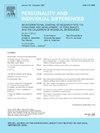环境敏感性和依恋对儿童生理情绪反应和调节的影响
IF 2.6
2区 心理学
Q1 PSYCHOLOGY, SOCIAL
引用次数: 0
摘要
根据环境敏感性的概念和感官加工敏感性特征,高敏感的个体比其他人更深刻地感知和加工信息,包括情绪信息。这些特征似乎可以预测更敏感儿童的社会情感发展,但这取决于他们成长的养育环境类型,这与差异易感性理论一致。在这里,我们评估了学龄儿童(N = 52, Mage = 8.30, SD = 0.64, 32名女性,居住在意大利)的敏感性、中度情绪反应和调节的个体差异是否作为依恋的函数。当孩子们观看情感视频片段时,我们在两种情况下测量了他们的皮肤电导:基线和放松,在这两种情况下,孩子们被要求在观看视频片段时积极调节自己的情绪。与低敏感儿童相比,高敏感儿童没有表现出更强的反应性或监管努力。然而,当依恋安全感较低时,他们对负面刺激的反应更强烈,但效应量适中。相比之下,只有初步的趋势表明,当依恋安全性高时,对负面图像的监管力度增加。对正面图像的反应没有相关的影响。研究结果表明,低依恋安全感可能会使更敏感的儿童暴露于更大的脆弱性和生理压力,而更安全的依恋关系可能会缓冲他们的痛苦。本文章由计算机程序翻译,如有差异,请以英文原文为准。
The contribution of environmental sensitivity and attachment on physiological emotional reactivity and regulation in children
According to the concept of Environmental Sensitivity, and as captured by the Sensory Processing Sensitivity trait, highly sensitive individuals perceive and process information, including emotional ones, more deeply than others. These features appear to predict socio-emotional development of more sensitive children, depending however on the type of rearing environment they grow in, in line with the Differential Susceptibility theory. Here we assessed whether individual differences in sensitivity moderate emotion reactivity and regulation in school-aged children (N = 52, Mage = 8.30, SD = 0.64, 32 female, resident in Italy) as a function of their attachment. We measured skin conductance while children viewed emotional video clips under two conditions: baseline and relax, in which children were asked to actively moderate their emotions when viewing the clips. Highly sensitive children did not show stronger reactivity or regulatory efforts compared to low sensitive children. Yet, they reacted more intensely to negative stimuli when attachment security was low, with a moderate effect size. In contrast, only a preliminary trend emerged suggesting increased regulatory efforts in response to negative images when attachment security was high. No relevant effects emerged in response to positive images. Findings suggest that low attachment security may expose more sensitive children to increased vulnerability and physiological stress, whereas more secure attachment relationships may buffer them from such distress.
求助全文
通过发布文献求助,成功后即可免费获取论文全文。
去求助
来源期刊

Personality and Individual Differences
PSYCHOLOGY, SOCIAL-
CiteScore
8.50
自引率
4.70%
发文量
577
审稿时长
41 days
期刊介绍:
Personality and Individual Differences is devoted to the publication of articles (experimental, theoretical, review) which aim to integrate as far as possible the major factors of personality with empirical paradigms from experimental, physiological, animal, clinical, educational, criminological or industrial psychology or to seek an explanation for the causes and major determinants of individual differences in concepts derived from these disciplines. The editors are concerned with both genetic and environmental causes, and they are particularly interested in possible interaction effects.
 求助内容:
求助内容: 应助结果提醒方式:
应助结果提醒方式:


